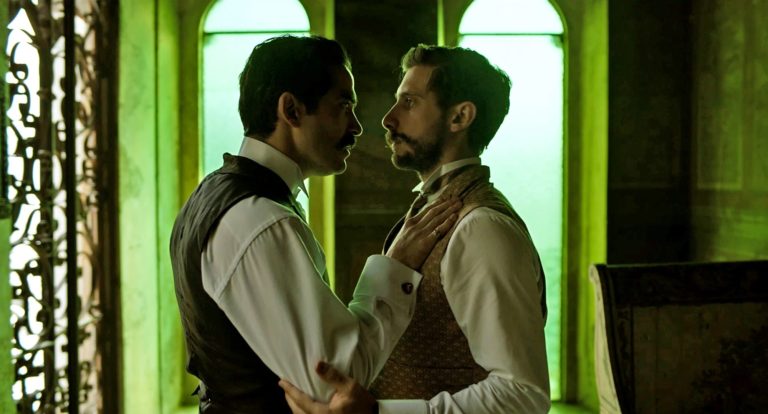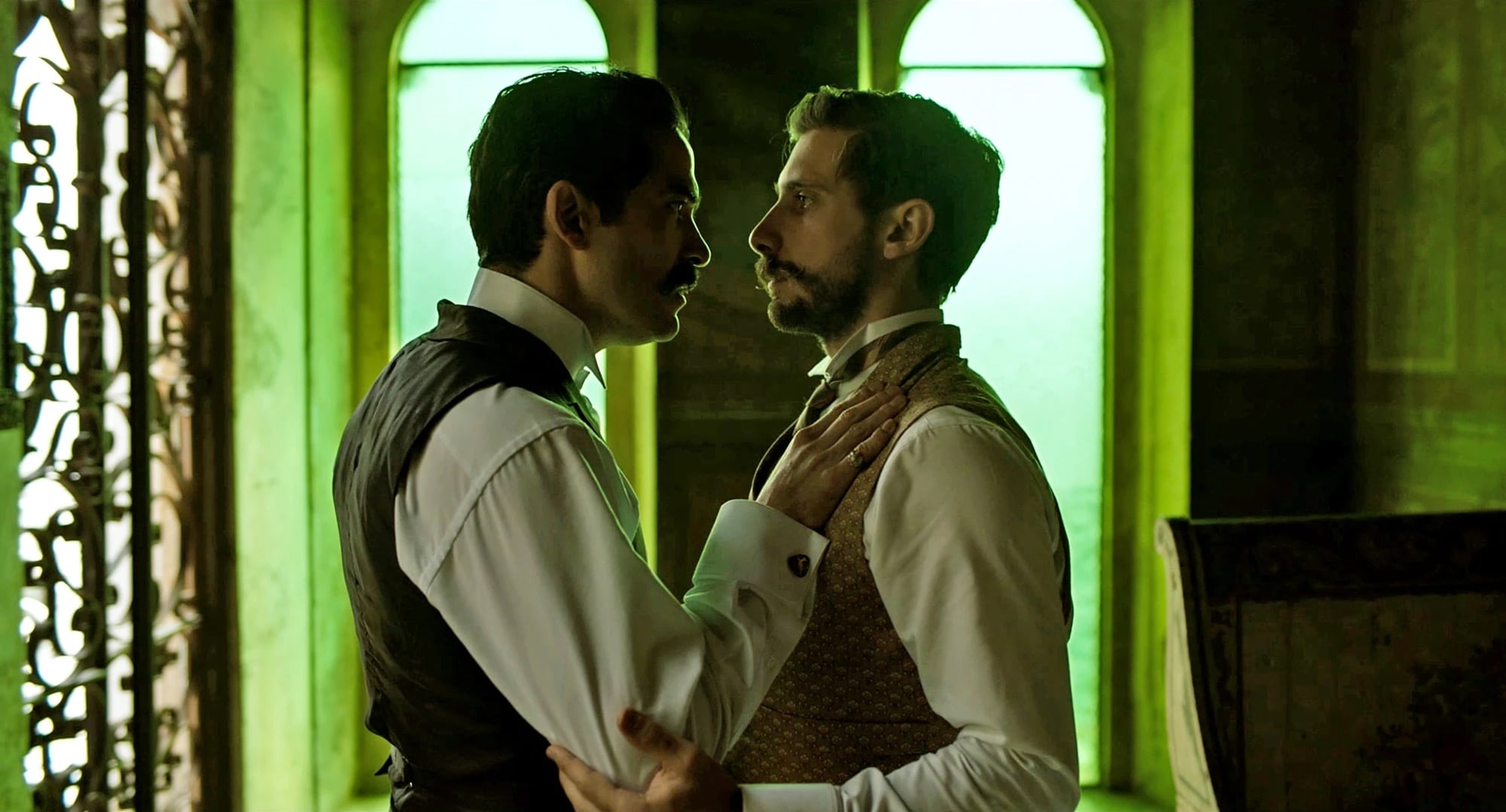

Dance of the Forty One, or El Baile de los 41, tells the story of the biggest gay scandal in Mexico’s history. (Netflix)
A new Netflix film – Dance of the Forty One – tells the fascinating and tragic story of the biggest gay scandal in Mexico’s history.
More than a century ago, on 17 November, 1901, police raided a house in Mexico City where they found 41 men from Mexico’s upper-class elite dancing together, with many in drag.
The scandal rocked Mexico’s high society, and it was rumoured that one more man had attended the ball – the president’s son-in-law, Ignacio de la Torre y Mier – but that he had been allowed to go free because of his status.
It has never been confirmed whether or not he was there, but de la Torre is thought to have been gay by historians, and to have led a double life.
The 41 men were arrested at the ball for “offence to morals and good manners”, and the event marked the first time that being gay was openly discussed in the media in Mexico. While many men bought their way out, some were sent to labour camps.
The scandal left its mark on Mexican society, and created a significant taboo around the number 41. To this day, many buildings do not have a 41st floor, there is no 41st army battalion, and often hotels and hospital skip room 41.
Dance of the Forty One, or El Baile de los 41, is out now on Netflix. The film focuses on de la Torre, played by Sense8’s Alfonso Herrera, who was forced to keep up appearances with his wife Amada (Mabel Cadena) while at the same time trying to live his life as a gay man in secret.
Herrera told NBC News that through the dramatised retelling of the story, those involved in the film wanted to “honour” the gay men who were targeted by police.
“We wanted to portray these men as men who wanted to be free, who wanted to be happy, and I think that [director David Pablos] did this in a very accurate way — in a very safe way — where they could be themselves,” he said.
Herrera continued: “I think that this film talks about what happens if you really want to be yourself and perceptions of society.
“This story talks about people wanting to be free, wanting to not feel attached or feel that they need to behave in a certain way in order to be accepted.”